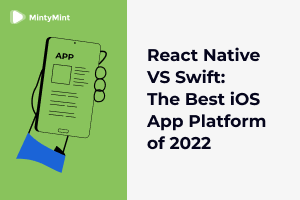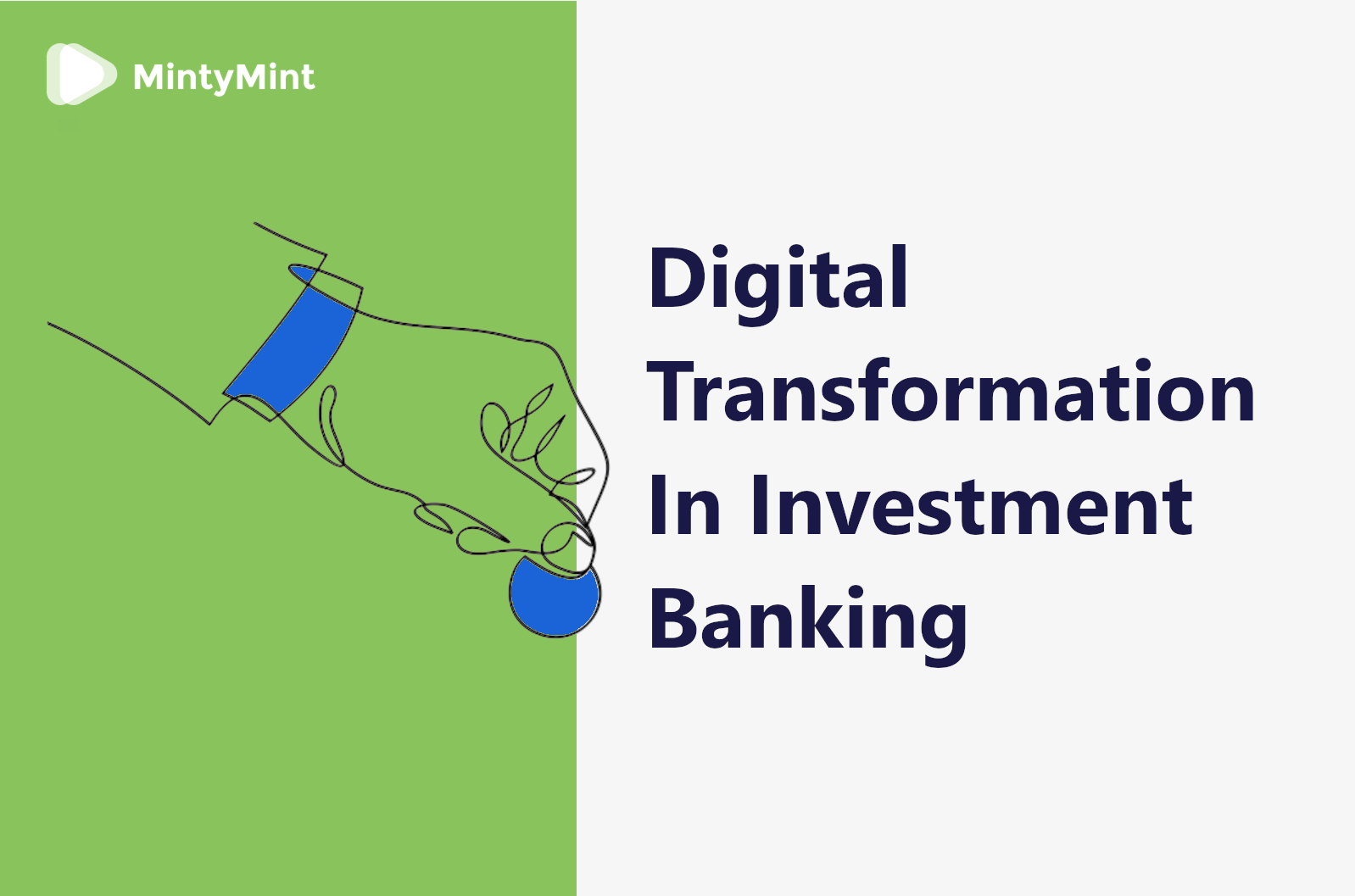Every startup requires developing a product strategy in order to succeed. In fact, data shows that only 3 out of 10 companies that don’t use a formal process to manage strategy withstand competition. So, unless you like to take the additional risk when establishing a business, it is worthwhile to spend the time and resources on developing a thorough product strategy beforehand.
The good news is that we’ve got you covered on this one, and you can learn how to write and implement an effective product strategy for your business right now – with knowledgeable advice from MintyMint, and a good chunk of statistics…
What is a product launch strategy and why is it important?
In essence, a product strategy is your game plan to win in the business competition. It describes a set of rules, and guidelines directed to help your product reach its ultimate goal – whether it’s to be discovered, to sell, or support your business any other way.
A product strategy is implemented via a product road map that implies specific steps, timeframes, and milestones on your way to making a product successful, and is a vital part of a product development lifecycle (usually takes place right after ideation).
Like that, the essential components of a product strategy are vision, goals, and initiatives.
Importance of product strategy development for startups.
We’ve already mentioned the success rate among companies without a formal process to manage strategy, and here’s another bit of startup statistics for you to chew on: 95% of new products fail in part due to poor product strategy.
Why so?
Well, there are 3 main cornerstones businesses usually trip over on the road to success – budget, clients, and workflow.
A good product strategy enables you to strike gold with all three.
- Budget
First of all, a carefully thought-out product strategy can save production costs. It can do so through reducing team size, cutting down working hours, and eliminating technical debt should we talk about IT projects.
So, it is not surprising that 64% of successful companies build their budget around their strategy, rather than past behaviors, market trends, economical situation, or anything else.
- Clients
Another essential win or lose business factor is client satisfaction.
In fact, it is estimated that as much as 14% of startups sink due to misreading their clients’ wants and needs.
In this regard, a carefully crafted product strategy that implies thorough market research and approach development can help to understand and satisfy the prospects better and turn them into lifelong customers.
- Workflow
Finally, workflow is another major aspect of business efficiency that is tightly related to product strategy.
Many would be surprised to learn that startup owners spend around 40% of their working hours on tasks that do not generate income – a stunning number to think of.
Now, what does the product strategy have to do with executive time management?
By determining the essential steps and initiatives of a product development process beforehand and shedding the unnecessary and inefficient activities, a clear product strategy facilitates effective task/role distribution, smooth team workflow, and quicker development process as a result, saving both staff time and company resources.
Common product strategy practices.
Now that you see the importance of product strategy and its place in the product development lifecycle, we can explore some of the common approaches and real-life examples of the notion.
While successful businesses often combine different approaches, in general, we can segregate 6 product strategy blueprints, depending on their main focus. Those are cost, differentiation, focus, quality, service, and innovation.
As usual, let’s take a closer look at each in particular.
Cost strategy
The cost product strategy focuses on providing the lowest product cost, or at least the best quality/cost ratio.
This is a rather straightforward strategy that appeals to the majority of consumers across virtually all industries. Money is a very limited resource, at that clearly countable, so leveraging it in a product strategy helps to directly attract customers.
In fact, as many as 43% of shoppers are not satisfied with the number of affordable products available on markets, which means that the niche is still undersaturated.
Some of the bright examples of brands prioritizing a cost product strategy are AliExpress and Walmart.
Differentiation strategy
A differentiation strategy revolves around the idea of standing out from the competition through unique branding, positioning, legend, or influence.
The companies that use this approach channel mottos like “I am unique” and strive to make the consumer feel the same. The need to differentiate from those around us is one of our basic social instincts, so it is no wonder that this approach lies at the core of product strategies of brands like Apple, Nike, and Obey.
Focus (focus group) strategy
The focus product strategy appeals to a specific group of consumers (a narrowly defined persona), value, or need, to evoke that “this is what I need / this is for me” feeling in potential customers. It can be a specific age group, economical class, type of activity, or any other characteristic strictly separating your target audience from the rest.
Focus product strategy is a rather practical approach suitable when you know exactly who your product is designed with in mind. Think Rolex, Caterpillar, Disney, GoPro – you get the picture.
Quality strategy
The quality product strategy puts the quality of products and services on the pedestal, offering supreme reliability as the main selling point.
As opposed to the cost strategy, this one appeals to a smaller group / more narrow range of consumers, who choose quality over price.
Some of the vivid examples of brands using this strategy are:
- Dell – who proof-test their electronics in extreme conditions,
- Volvo – known as one of the safest automakers,
- and Columbia – vouching to protect you from the elements at extremes.
Service strategy
A service product strategy focuses on delivering an A-grade customer experience throughout the interaction with a brand, where nothing is left out of detail.
This strategy implies offering products and services in the fastest, smoothest, and most effortless way possible, often putting aside other product-determining factors.
Actually, a recent poll among nearly 2000 business experts ranked customer service as the #1 priority for companies in the next 5 years – way above product quality and price.
When we talk about the successful application of the service product strategy, consider Netflix, Amazon, or Mcdonalds as some of the brightest examples.
Innovation strategy
Last but not least, innovation product strategy is a common approach among startups that focuses on, as the name suggests, delivering innovative technologies and solutions in their niche.
As people, we love and tend to be attracted to everything new, sophisticated, advanced, and positioning your product as such or offering something genuinely unseen before is clearly a great strategic move.
This is supported by the fact that 84% of customers prefer brands that are innovative in the goods and services they provide, companies like Tesla, or Samsung, who position themselves as technological leaders in their respective niches.
8 Steps For Successful Design and Implementation Of Product Strategy
Finally, it’s time to learn how to design and implement a winning product strategy for your startup!
The development of a product strategy is a continuous process that requires both creativity and analytics. Therefore, “the recipe” is unique for every business.
However, there are clear steps you should take to create a roadmap for your product’s success.
1. Identify your product’s business goals
Creating a successful product strategy begins with identifying and writing down the main business goals for your startup.
These goals should be clearly defined, measurable, with key performance indicators and precise timeframes.
Establish target monthly recurring revenue (MRR), customer lifetime value (LTV), customer acquisition cost (CAC), as well as revenues per client (RPC), client retention rate (CRR), profit margin (PM), and active client ratio/client engagement.
2. Define the target audience’s needs
Once you clear your product’s business goals and KPIs, you need to create vivid client personas.
This is a vital product strategy development step often underestimated by aspiring entrepreneurs, and the shutdown reason for as many as 42% failed start-ups.
Do market research, conduct polls, brainstorm with your marketing team, and most importantly – focus on who your customer is. Then, you will be able to define their main needs, expectations, and pain points, and find ways to address those.
This brings us to the next product strategy development step…
3. Determine your product’s key features
Knowing your customers’ wants and needs, you can work around them to produce particular product features and solutions that’ll suit those requirements.
At this stage, it’s important to focus on actual user benefits rather than a rich feature list for its own sake. Think like the customer, and figure out what would be the main characteristics you’d look for in a product if you were in their shoes.
4. Find ways to differentiate from the competition
After determining your product’s key features, you need to come up with a set of unique selling points (USPs) that’ll really make your product stand out.
Market competition is a hefty obstacle on your way to success, with every 5th startup going down due to giving in to its peers, so take heed.
To avoid adding up to that failure statistics, figure out how your product can differ from the rest and where it can beat the competition, whether in terms of design, service, or features.
5. Develop a clear product vision
Once you figure out your business goals, your audience’s needs, your product’s features, and its unique value proposition – you can combine these insights into a refined product image.
Now, they say that the devil is in the details. The same can be said about your product vision. Make sure that every part of it is well-thought-out, consistent, cohesive within the bigger picture.
In the same way that Rolex would not use plastic and Nike don’t make classic dress shoes, nothing in your product image can be out of place.
6. Create a detailed production roadmap
With a clear product vision in mind, you can outline a detailed production roadmap.
In this regard, you’ll have to assess things like production budget, team structure and management methodology, project milestones, timeframes and release dates, and KPIs for the product development process (not to mix with the product’s KPI).
7. Evaluate market feedback and explore growth opportunities
As already mentioned, developing a product strategy is a continuous process.
In order to maintain its effectiveness, it’s crucial to frequently review and adjust a startup’s product strategy in order to avoid the primary cause of startup failure – misreading the market demand.
To do so, collect feedback from early adopters (if possible) and market analysis data, and determine common pain points and success factors of your product.
Then, look for ways to scale your product’s reach and target audience, whether it’s through paid advertising, B2B marketing, social networking and press, or even redesigning your product to appeal to a wider audience.
8. Adjust the strategy
Last but not least, adjust your product strategy according to market feedback and growth opportunities to improve your offer.
As mentioned above, flexibility is your last key to the doors of success. Quoting the late Steve Jobs – a true product strategy genius – don’t settle, keep looking for that perfect, unseen idea.
Final word
Developing a successful product strategy requires analytics, creativity, diligence, and flexibility from you and your team. Depending on the resources and attention invested, it can make your startup a successful enterprise or a pitiful statistic.
At that, preparation is only half the battle and is nothing without action. 77% of prospering businesses constantly translate their strategy into operational measures and reevaluate it, which furtherly proves that plans are nothing without execution.
Contact us if you need help with developing or fulfilling a product strategy!



















